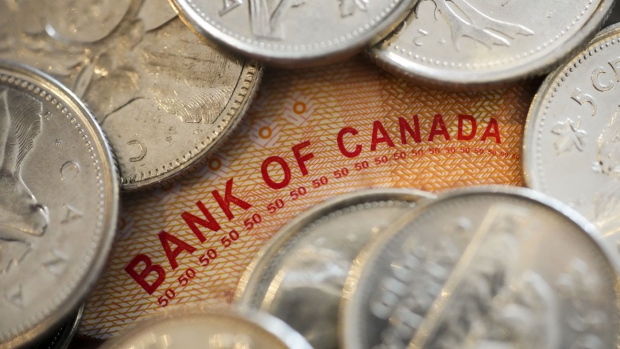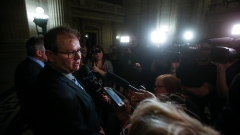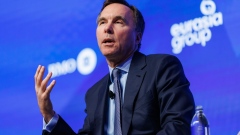Sep 13, 2019
College Athletes May (Finally) Get to Cash In
, Bloomberg News
(Bloomberg Opinion) -- The California Assembly has 61 Democrats and 18 Republicans. The California Senate has 29 Democrats and 11 Republicans. As with everywhere else in the U.S., the two parties are divided on most issues, from regulating the gig economy to limiting gun purchases. But there is one issue on which both Democrats and Republicans in California are aligned: paying, at long last, college athletes.(5)
On Monday, a bill that would override the “amateurism” rules of the National Collegiate Athletic Association and give athletes at the major California universities the right to capitalize financially on their name, likeness and image passed the Assembly by a vote of 72-0. Then, on Wednesday, the state senate passed the Fair Pay to Play Act, which allows athletes to market themselves for things like personal sponsorships, endorsements, and video-game licensing, by a margin of 39-0. Not a single dissent! I still can’t quite believe it.
There have always been a few lonely voices calling for the athletes who play college football and basketball -- the revenue sports, as they’re called -- to be paid. One such person, believe it or not, was Walter Byers, the man who ran the NCAA from 1951 to 1987. In retirement, he turned against the amateurism rules he had long enforced, describing them (correctly) as the means by which the college sports cartel avoided paying its labor force.
Another was Sonny Vaccaro, who did as much as anyone to commercialize college sports; he marketed basketball sneakers for Nike, Adidas and Reebok before quitting to fight the NCAA. His beef was that it was wrong for everyone involved in college sports to be making money except the players.
But until recently, those voices went largely unheard. Most people -- even ardent fans -- ignored the question of whether college athletes were being exploited. If they got angry at the NCAA it wasn’t because of its cartel-like nature, or the harshness of its bylaws. It was usually because the school they cheered for was being punished “unfairly” for violating some rule or other. (Fans always think their university is being punished unfairly.)
Then, in 2009, the former UCLA basketball star, Ed O’Bannon, sued the NCAA after seeing his avatar in a video game -- and realized that the video game company was paying the NCAA for the rights to his image instead of him. Two years later, Taylor Branch wrote his ground-breaking article in The Atlantic, “The Shame of College Sports.” It included this memorable line: “The tragedy at the heart of college sports is not that some college athlete are getting paid” -- under the table, he meant -- “but that more of them are not.”
The coastal elites started paying attention.
I jumped in a few month later, after doing some research that convinced me that the exploitation of basketball and football players at big-time college programs was unconscionable. “Frontline” did a documentary about exploited athletes, “Money and March Madness.” Sports columnists began regularly taking the NCAA to task. The issue was rising to the surface.
When the O’Bannon case went to trial in June 2014, it was widely covered in the media and the NCAA did not come off well. (Charles Pierce, writing in Grantland, described the NCAA’s arguments as “the threadbare piety in which it wraps its heedless commercialism.”) It ended with both the trial judge and the appeals court agreeing that the NCAA’s rules outlining and defining amateur athletics amounted to an antitrust violation. But sadly, the appeals court bought the NCAA’s argument that amateurism was what differentiated college sports from professional sports, so the remedies it allowed did nothing to overturn the status quo.
The unanimous vote in favor of the Fair Pay to Play Act shows just how far we’ve come since then. It’s a little like marriage equality. For years, public opinion moved an inch at a time -- and then all at once, it seemed, two-thirds of the country supported it.
California State Senator Nancy Skinner, the sponsor of the bill, is a perfect example of how people have come around. In November 2015, she heard the economist Andy Schwarz speak at a Rotary Club meeting in Oakland. Schwarz has been fighting the NCAA since 2004; he was one of the people who helped gin up the O’Bannon case. He can be absolutely withering about the NCAA cartel.
As Skinner listened to him, she later told the New York Times:
All of a sudden the light bulb went off. Rather than being the bystander going, “Gosh this is so unfair, how do these people get away with this?” I’m like, “Hey, if I’m in the Senate, can the state do something about it?”
She also framed the issue in exactly the way critics like Schwarz and Vaccaro have all these years: “I don’t know of any other industry that can rely on a large set of people’s talent for which they deny them any earnings and all compensation.”
The bill embraces what’s called the Olympic model. Olympic athletes aren’t paid directly for competing, but they are allowed to accept money from endorsements, sponsorships, autographs, and the like. Skinner’s bill gives athletes at the big California universities the same ability, overriding NCAA bylaws that forbid such payments. It’s not everything. Athletes who lack the star power to reap endorsement money will still be unable to capture their economic value to a university. But it’s a start.
Or perhaps I should say, it might be a start. You see, assuming the bill is signed into law by Governor Gavin Newsom, it won’t take effect until 2023. That would give the NCAA and the affected California universities plenty of time to sue to have it overturned.
Absurdly, the NCAA says that the bill is “unconstitutional,” because it “would remove that essential element of fairness and equal treatment that forms the bedrock of college sports.” In a letter to Newsom, the NCAA also claimed that if California athletes are allowed “an unrestricted name, image and likeness scheme” it will put every other Division 1 university at a disadvantage.
I’m not so sure about that. For one thing, Schwarz has co-founded the Historical Basketball League, an eight team league that will pay college-age basketball players upwards of $150,000 a year before they enter the pros. Its first year of operation will be 2020, and if it’s even mildly successful in drawing top high school players away from college basketball it will put enormous pressure on the NCAA’s amateurism model.
For another thing, California is unlikely to be the only state to pass a law similar to the Fair Pay to Play Act. Earlier this year, Washington State considered similar legislation, which will likely go forward now that California has led the way. I imagine by 2023 ten or 15 states might have their own version of the law – at which point the move to give athletes their economic rights, the same rights as any other American, could turn into a stampede.
Yes, the winds of change are blowing. What the California bill suggests most of all is that the days when the NCAA could hold back progress are finally coming to an end.
(1) The more common term, of course, is “student athlete,” but I avoid it at all costs. It is an Orwellian phrase, devised by the NCAA in the 1950s to avoid having to pay workers’ compensation to injured football players.
To contact the author of this story: Joe Nocera at jnocera3@bloomberg.net
To contact the editor responsible for this story: Timothy L. O'Brien at tobrien46@bloomberg.net
This column does not necessarily reflect the opinion of the editorial board or Bloomberg LP and its owners.
Joe Nocera is a Bloomberg Opinion columnist covering business. He has written business columns for Esquire, GQ and the New York Times, and is the former editorial director of Fortune. His latest project is the Bloomberg-Wondery podcast "The Shrink Next Door."
©2019 Bloomberg L.P.
























